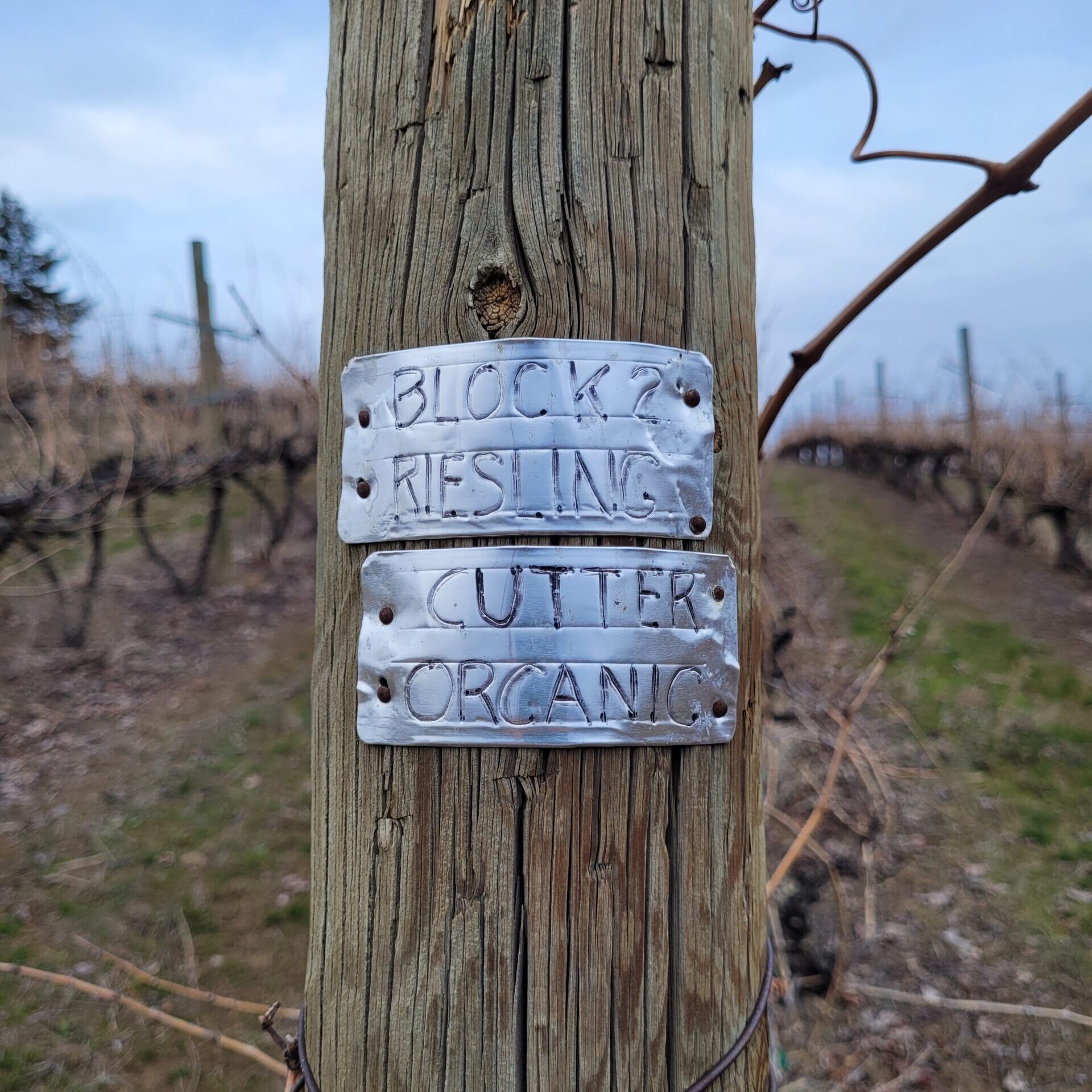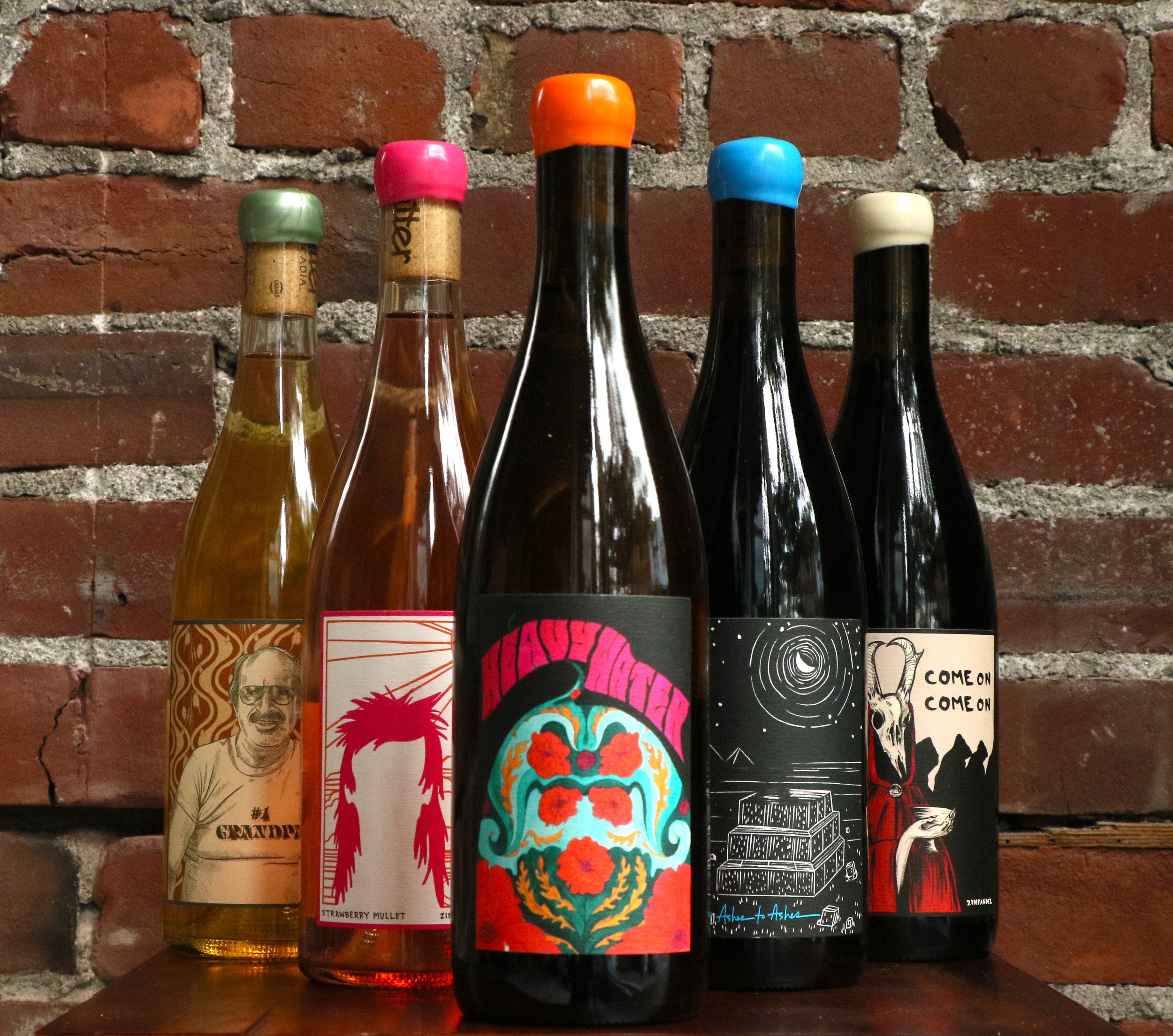 This is a pre-arrival offer for a few wines that, I believe, will delight you, then maybe confuse you… and then delight you again.
This is a pre-arrival offer for a few wines that, I believe, will delight you, then maybe confuse you… and then delight you again.
If you’ve bought, drank or heard about the world’s most famous desert Riesling “Heavy Water” or the evocatively named rosé, “Strawberry Mullet,” then you’ve at least come across the curious world of Cutter Cascadia. To be honest, summarizing Michael Garofola’s one-man project Cutter Cascadia is not easy. More than nearly anyone else we work with, I have trouble condensing the efforts of Cutter Cascadia into any single, easy-to-digest line.
Every wine seems to be its own, unique, deeply felt narrative. This may seem trite, but the wines are are wildly original, even though its my sense that that is the last thing Michael wants — to be novel, or god forbid “hip”. There just aren’t any precedents here.
The Gorge, as you may or may not know, runs along a stretch of the Columbia River to the east of Portland and north of Mount Hood. In the last decade or so this has become the mysterious home for some of the most buzzed-about estates in the Pacific Northwest.
The key to understanding this area (if there is one) seems to be that despite its tiny footprint, it includes microclimates that run the gamut from the Mosel to La Mancha: wet and cold to hot and dry. Looking around the town of Cascade Locks you feel like you’re in a rainforest. Head east on I-84 and the average rainfall drops an inch every mile until you’ve reached, well, a desert. This is extreme.
As a result, the local winemakers like to say you can pretty much grow any grape variety here, from delicate and airy Chasselas to face-rippingly brutal Monastrell. Keep in mind we don’t actually know if anyone is growing either of these grapes here, but the point is they could.
Perhaps this helps explain the scattershot and, dare we say, even unsexy selection of grapes with which Michael from Cutter Cascadia has found himself working, namely Dolcetto, Zinfandel, Fiano, Chardonnay and, yes, Riesling.
Given our own obsession with Riesling and Dornfelder and other grapes less commercially, eh, dominant, we think to ourselves: Well this is a crazy individual. Not only should we be friends, but we should be a part of this.
And the truth is that every single wine Michael makes has relatively little, if anything at all, to do with preconceptions of these grapes. The Riesling is burly and gripping; the Zinfandel energetic, earthen and delicate. Part of this has to do with the extremes of this place, the Gorge. But the other part has to do with Michael’s deeply rigorous, reflective and considered decisions, both in the vineyard and in the cellar.
If the labels appear whitty and whimsical, the wines are anything but.
Currently Michael is working two sites in the Gorge. The majority of grapes come from the Hillside Vineyard, just outside of the Dalles, where the more arid climate starts to begin. The Dolcetto comes from the Von Flotow vineyard, on the western edge of Hood River and about halfway between the rainforest and the desert. Both Hillside and the Dalles are technically part of the Columbia Valley appellation, but we’ll follow the lead of the locals and call it what it is: the eastern edge of the Gorge.
Some wines are in stock in limited quantities, others are pre-arrival for June. To order, simply email orders@vomboden.com!

2022 Cutter Cascadia White Blend “#1 Grandpa” ~$24 — arriving in June
“#1 Grandpa” is a blend of Chardonnay and Riesling with a small percenatage of Fiano. The amount of “Vitamin R” in the blend seems to be creeping up every vintage, this year it is essentially 50% of the blend. Once again there’s a notable Italian influence as the grapes combine to display a profile that’s reminiscent of mineral driven Vermentino or Verdicchio – yet with a cooler-toned and more chiseled edge than is to be expected with these varieties. There is some foot trodding and short maceration in the press to bring a bit of texture, but this is very much a “bianco” from the Hillside Vineyard and a great introduction to the curious terroir.
2022 Cutter Cascadia Zinfandel “Strawberry Mullet Rosé” ~$24 — arriving in June
Zinfandel is expressed in three cuvées: the first, “Strawberry Mullet” is, full stop, one of the best domestic rosés – with its raciness and depth perhaps belied by the tongue-in-cheek name and label. Michael presses the fruit whole cluster direct press and ferments in barrel and steel, lees aged 6 months before bottling unfiltered & unfined with minimal sulfur. There is a beautiful core of savoriness and herbal quality without sacrificing freshness.
2021 Cutter Cascadia Zinfandel “Come On, Come On” ~$34 — arriving in June
The red Zin is labelled as “Come On, Come On,” a nod to Wasco County’s most famous residents. Forsaking its Southern Mediterranean roots, this is Zin via the Savoie or the Italian Alps – nervy, energetic, palate-staining but elegant – the Northern California archetypes don’t even enter into the conversation. This is a totally different wine than the 2020 version which was beautifully full with a streak of volatility running through bringing freshenss, the 2021 was partially whole cluster fermented, and about 20% of the wine had a fully “Lapierre-style” carbonic maceration. This is subtle and quietly elegant Zinfandel, and may just be the best vintage he has made yet.
2021 Cutter Cascadia Dolcetto “Ashes to Ashes” ~$27 — in stock now
For his Dolcetto, “Ashes to Ashes,” Michael cites the structured, high-altitude wines of Dogliani’s San Fereolo among others in Alba as personal favorites; their loyalty to and championing of the grape in the face of economic pressure to switch over to the more popular and lucrative Nebbiolo is likely particularly inspiring. Indeed, Ashes is serious – dark-toned, structured, even a bit brooding while maintaining a wispy freshness.
2021 Cutter Cascadia Riesling “Heavy Water” ~$38 — in stock now
Finally, “Heavy Water,” which is probably the world’s only skin contact wine made from 40-year old vines in the desert. Doing a straight-forward vinification of Riesling grown in this context wouldn’t have yielded a wine of much interest, just as you don’t come across too many compelling white wines from the more arid parts of Italy and Spain. But what are compelling are the skin-contact masterpieces from Paolo Bea in Umbria – Santa Chiara and Arboreus in particular – and these wines are the direct inspiration for Heavy Water. As psychedelic and surreal as its name and label would imply, this is worlds away from anything that could possibly come out of Germany. Deeply phenolic with hints of anise, clove and high-toned fruit, Riesling’s unmistakable identity pulses throughout this mind-bending and invigorating wine.